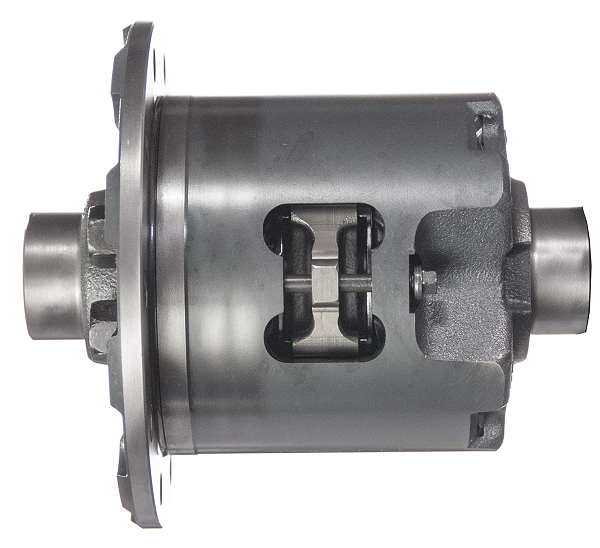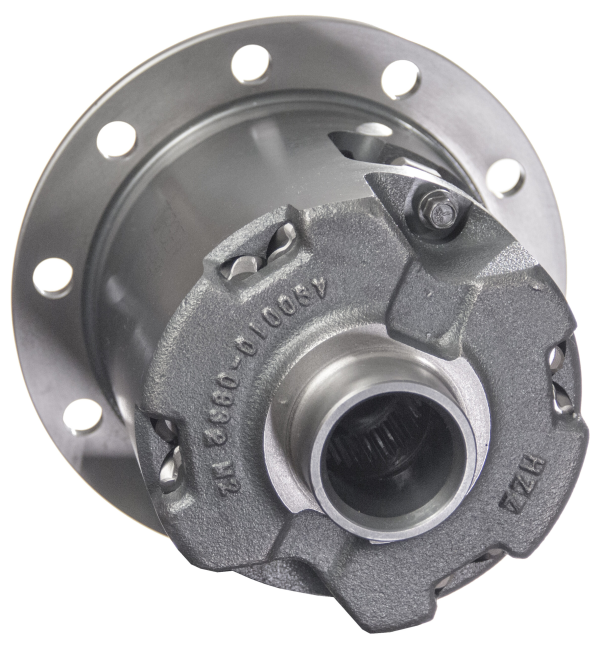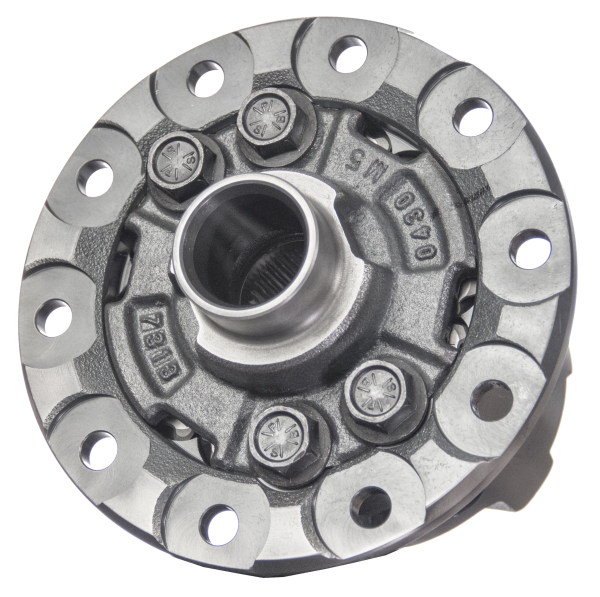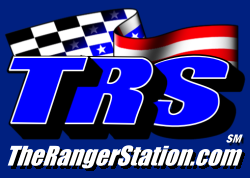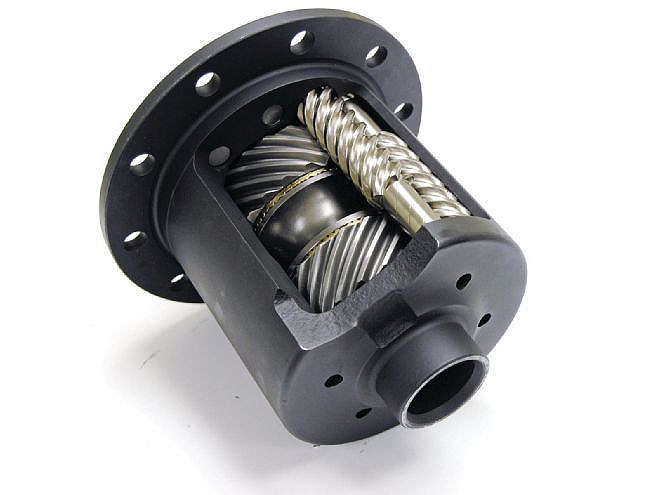
(Torsen Limited Slip Differential)
The 2002 Ford Ranger FX4, the 2003-2007 Ford Ranger FX4 Level II, and some 2008-2009 Ford Ranger FX4’s came equipped with a 31-spline 8.8-inch rear axle with a Torsen limited slip. The 2003-2007 NON level II Ford Ranger FX4’s and some 2008-2009 Ford Ranger FX4’s came with a 28-spline 8.8-inch rear axle and a standard limited slip. So, what is a Torsen limited slip, and how does it differ from a normal limited-slip differential?
Standard Limited Slip
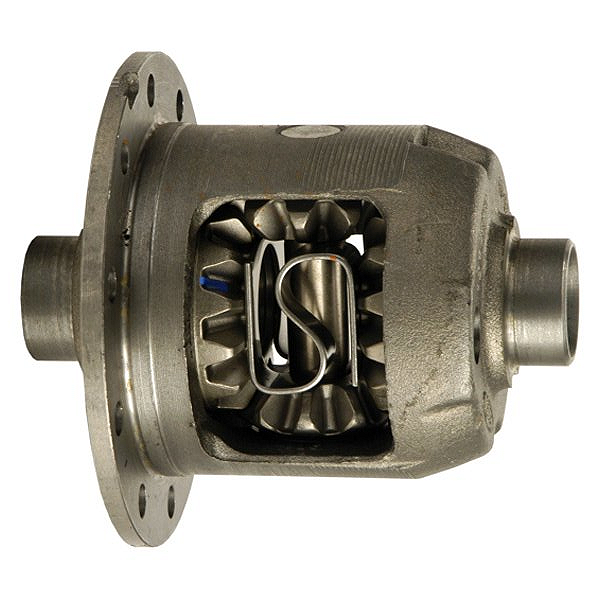
(Ford Limited Slip Differential)
The Ford limited slip differential contains a clutch assembly that can transmit power to the wheel that retains traction. The clutch component is a friction clutch that has two sets of flat friction plates. The clutch engages when applied pressure exceeds the engagement threshold pressure. A spring preload that separates the sun gears presses the plates in both sets together. When the axle shafts experience a difference in traction, the pinion gears exert an additional force in the direction of the axle shaft with more traction. If the additional pressure exceeds the engagement threshold, the clutch assembly engages. The engagement allows the driveshaft to transmit more power to the slower-spinning wheel with more traction. The additional power reduces the difference in velocity of the two axle shafts.
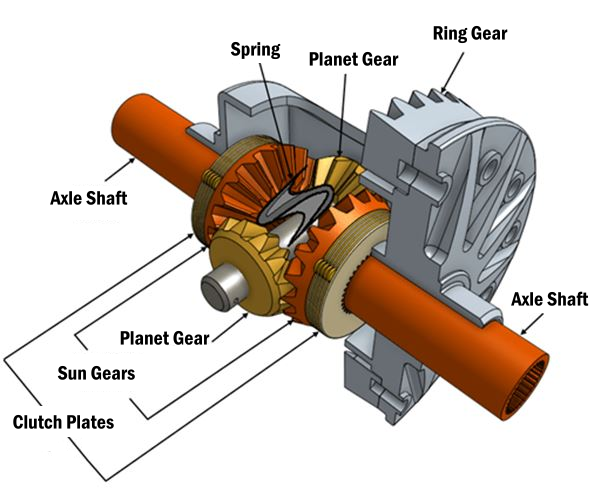
Torsen Limited Slip
The name ‘Torsen Differential’ is derived from the term “Torque-Sensing.” This differential has an ability to be torque-biasing, meaning that the torque is distributed between both tires according to where it is most required at a given moment.
Friction is properly managed because it results from proper torque application to the helical gearing. Torque is then applied to the differential casing once it is properly applied to the gearing, allowing the Torsen differentials to prevent wheel spin and bias torque.
Further, the Torsen differentials, being torque-biasing, have the advantage of operating without losing traction in the process. The Torsen differential supports imbalances in traction because the friction it manages from the helical gearing. The result? Tires with better traction receive more torque, while tires with worse traction receive less torque.
The Torsen, geared or helical differential does not contain spider gears, side gears and clutches like a limited slip differential. Instead, there are worm gears (on the driveshafts) and worm wheels, which are connected to the differential casing. On the end of the worm wheel, there are spur gears which connect the worm wheels together. When the truck is driving straight, the worm wheels just push against the worm gears and turn both wheels at the same speed. As both wheels are travelling at the same speed, there is no need for the worm wheels to turn around their own axis.
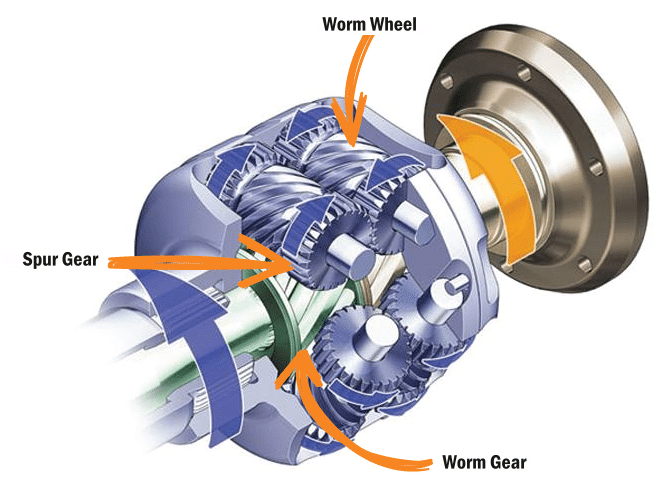
The Torsen works the same as an open differential when the torque applied to both wheels is equal. If one axle spins faster, it turns the worm gear. This worm gear is connected via the spur gears with the worm gear of the other axle and makes it turn in the opposite direction, therefore making it possible to have both wheels spin at a different speed in corners. The inside wheel turns slower by the exact amount the other wheel turns faster. This difference in speed is dictated by the road.
If one of the wheels encounters a situation where it has wheelspin, the geared differential will bias torque to the wheel with grip. This happens because there is friction in the differential. There is friction between the worm gear and worm wheel, between both worm gears and between the worm wheels and the housing where they turn around their own axis. This friction is created by design and is why the differential works as a limited slip differential. Under load, the gears cannot rotate freely. The friction between the gears is used to restrict the amount of speed difference between both wheels. The torque will be biased over the differential.
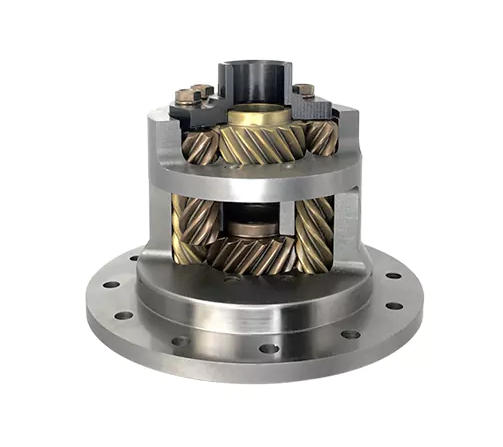
Benefits Of The Torsen Limited Slip
Ford Ranger FX4 8.8-Inch Torsen Differential
